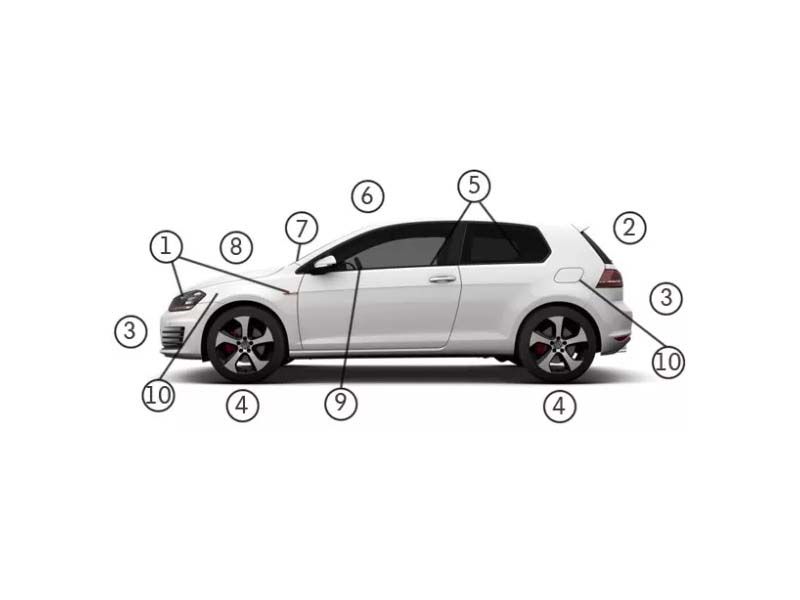Why should you check your vehicle before it’s MOT test?
Research from the Society of Motor Manufacturers and Traders (SMMT) indicates that around 1.5 million MOT failures each year could be avoided if motorists notify the dealer of simple problems with the vehicle before the annual roadworthiness test is carried out.
Taking just a ‘Minute Or Two’, the 10-step checklist will take motorists through a series of quick-and-easy checks – from headlights and tyres to windscreen wipers and fluid levels.
By forewarning us of any required work in advance of the MOT, motorists can then give their vehicle the best chance of passing the test first time around.

1. Headlights and indicators
Check that all of your car’s lights function properly – headlights, sidelights, rear lights, hazard lights and indicators.
2. Brake lights
Press the brake pedal and ask a friend to check that the rear brake lights come on – including any supplementary brake strip light.
Alternatively, carefully reverse up to a reflective surface (window, wall or garage door) and look behind to see for yourself.
3.Number plate
Make sure that the number plate is clean and legible – even a quick wipe with a cloth can make a difference.
The font and spacing of letters must also comply with legal requirements to be passed by the MOT station.
4. Wheels and tyres
Check that wheels and tyres are undamaged. The minimum legal tyre tread depth is 1.6mm and any tyres with less than this will be marked as an MOT ‘fail’ (though it’s recommended that tyres are changed when tread reaches 3mm).
If you’re in doubt about how much tread is left on a tyre, Crewe Volkswagen can check for you. We can also advise on the type of tyre that is right for your car if a replacement is required.
MOT History Checker
Check the MOT status and history of any car in the UK using our free MOT Check
Your vehicle registration
5. Seats and seatbelts
The driver's seat should adjust forwards and backwards and all seatbelts should be in good, working order. Test movement of the seat and inspect the seatbelt's full length for damage.
Tug sharply on all seatbelts to check that they react as they’re supposed to if you have to brake severely.
6. Windscreen
Check the view out of the front of the car for damage – any damage larger than 40mm will cause a ‘fail’, as will any damage wider than 10mm in the ‘swept’ area of the windscreen in front of the driver.
7. Windscreen wipers
Make sure your wipers are able to keep your windscreen clean – any tears or holes in the wiper rubber can be an MOT fail.
8. Screenwash
Top up the washer bottle before taking the car in for a test – something as simple as an empty container can cause an MOT fail.
9. Horn
Give a short blast of the horn – if it doesn’t work, your dealer will need to repair or replace it.
10. Fuel and engine oil
Make sure your car is filled with enough fuel and engine oil – you can be turned away from the MOT without suitable levels of either, both of which are required by the dealership when running the car to test its emissions levels. If you are unsure about the type of oil that should be used, get in touch with us or read our helpful blog about checking your car engine oil.
